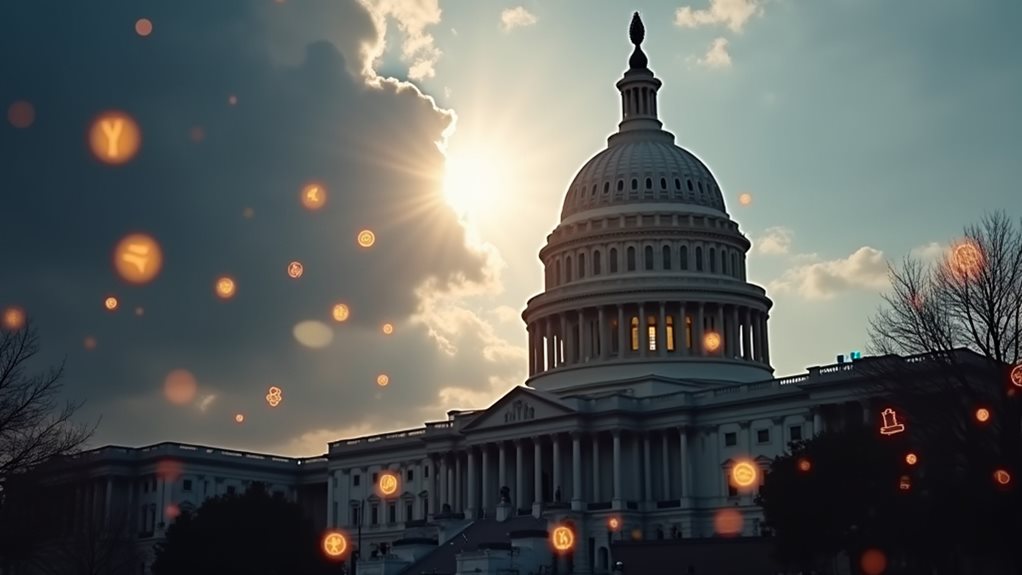The GENIUS Act just made stablecoins officially America’s problem—in a good way, maybe. Trump signed this first-ever federal stablecoin framework in July 2025, forcing issuers to get licenses by November 2026. They’ll need proper reserves, monthly reports, and anti-money laundering compliance. No federal insurance though, so users still eat the risk. The law aims to bring legitimacy to a $3.7 trillion market that’s been the Wild West until now—but implementation details reveal the real story.

After years of regulatory uncertainty that left crypto companies guessing and consumers vulnerable, Congress finally did something. The GENIUS Act passed the House on July 17, 2025, and President Trump signed it into law the very next day. Major crypto firms showed up to watch. Even politicians managed bipartisan support for once.
This isn’t just another crypto bill that sounds important but does nothing. It creates the first thorough federal framework for stablecoins in America. Payment stablecoins—those digital assets designed to maintain stable value for payments—now have actual rules to follow. The Crypto Task Force established clear guidelines to reduce regulatory pressure on compliant issuers.
The law defines payment stablecoins as digital assets recorded on cryptographically secured distributed ledgers. They’re designed for payment and settlement with fixed monetary value. National currencies, deposits, and securities don’t count. And here’s the kicker: these stablecoins aren’t federally insured. Risk remains.
And here’s the kicker: these stablecoins aren’t federally insured. Risk remains.
Starting November 2026, nobody can issue payment stablecoins without proper licenses. Companies must comply with anti-money laundering laws, sanctions rules, and hold adequate reserves. Because apparently, some issuers thought backing digital money with sketchy assets was a brilliant idea.
The regulatory machine is now grinding into motion. Bank agencies, state regulators, and the Treasury Department all get roles in this new system. They have until the prohibition begins to draft rules and create operational guidelines. Coordination between federal and state oversight aims to prevent the usual regulatory chaos. State regulators must submit their initial certification within one year of the effective date to participate in the oversight framework.
For consumers, this means more transparency about reserves and operational standards. Senate Republicans had pointed out the obvious risks of unstable reserves and unclear issuer operations. Now there are guardrails. Permitted issuers must provide monthly reports on reserve composition, audited by registered public accounting firms.
The market implications are substantial. Stablecoins get legitimacy and trust, potentially reaching $3.7 trillion by 2030. Foreign issuers wanting to operate in the US market must follow American standards. This sets the tone for international stablecoin regulations globally.
The changeover period gives everyone time to prepare. Regulatory agencies must write detailed rules while companies figure out compliance requirements. After decades of crypto operating in regulatory limbo, actual framework exists. Whether it works remains to be seen, but at least the guessing game is over.









